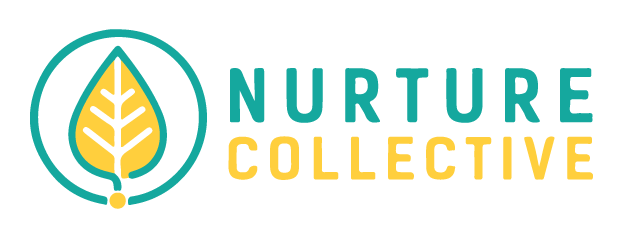THE NURTURE, NOURISH & THRIVE G-TUBE WEANING PROGRAM
The Nurture, Nourish & Thrive G-tube Weaning Program is rooted in the belief that children can safely and most effectively transition from feeding tubes in the comfort and security of their homes. We firmly believe that parents and caregivers, when empowered to act as their child’s primary therapist, play a pivotal role in this process.
We adopt a comprehensive approach to weaning, ensuring that every family collaborating with us receives support from a clinical team composed of an occupational therapist/feeding specialist, a registered dietician, a Parent Coach, and a mental health counselor. Each team member holds the necessary licenses and qualifications in their respective fields. They are trained in various theories and frameworks, including maternal and infant mental health, trauma-informed care, attachment theory, sensory processing, parent coaching, and relationship-based care.
Collectively, we will create a tailored weaning plan for your child and guide you through its gradual, step-by-step approach.

Who is involved in the program?
Our Team (occupational therapist (OT), registered dietician (RD), mental health counselor
What does the Nurture, Nourish & Thrive Program entail?
Our program has five stages:
- The Assessment phase includes gathering information, including medical diagnosis, history of feeding, current feeding regimen, safety of feeding, growth and weight information, and caregivers involved. Information can be obtained by reviewing medical charts, parent questionnaires, observation of the child’s feeding skills and behavior, and parent interviews.
- The Preparation phase involves the OT and the mental health counselor working together on advancing food acceptance and decreasing food refusal and aversion. The RD will consolidate the enteral feeding regimen to bolus feeds.
- The Hunger Induction phase entails the family, OT, RD, and counselor working together as the family decreases the enteral feeding regimen gradually to induce hunger. During this time, the counselor will support the family during the transition. OTs will work on increasing food intake by mouth, and the RD will provide insights on nutrition and hydration needs.
- The intensive treatment involves eliminating g-tube feeding and replacing it with foods, removing barriers to advancing intake, and supporting the family and child during this time. Success is when the child can consume 75% of their caloric needs by mouth and 100% of the lower end of hydration needs. This involves daily in-person or virtual visits with occupational therapists, RD, and counselors for two weeks.
- The follow-up phase involves a weekly follow-up visit or contact with all disciplines every week for the first month, then every month for one month, and then every two months after that. If the client can maintain BMI/age and adequate oral intake for 4-6 months (without any g-tube feeds), they may be ready to be referred to MD to remove the feeding tube. The team will do at least one follow-up after the g-tube removal.
How do we get started?
- Fill out the intake form with questions about your child’s feeding situation. This will help us determine if our program is suited for your child and family.
- If determined eligible, you will be scheduled for an evaluation. Evaluation is 2 hours of in-person or virtual sessions to assess your child’s skills and determine an action plan.
- After the evaluation, the team will create an individualized Nurture, Nourish & Thrive Program and discuss the plan with the family. This includes the weaning program, the support team (OT, RD, counselor), and the schedule for sessions with OT, RD, and counselor. A written plan covering how to eat together, foods to offer, how to reduce tube feeds for your child specifically, and strategies for stress management during difficult times.
What if the child is not tube-fed?
Your child may be eligible for the Joyful Eaters Independent Feeders Program

For questions, please email toni@mynurturecollective.com
